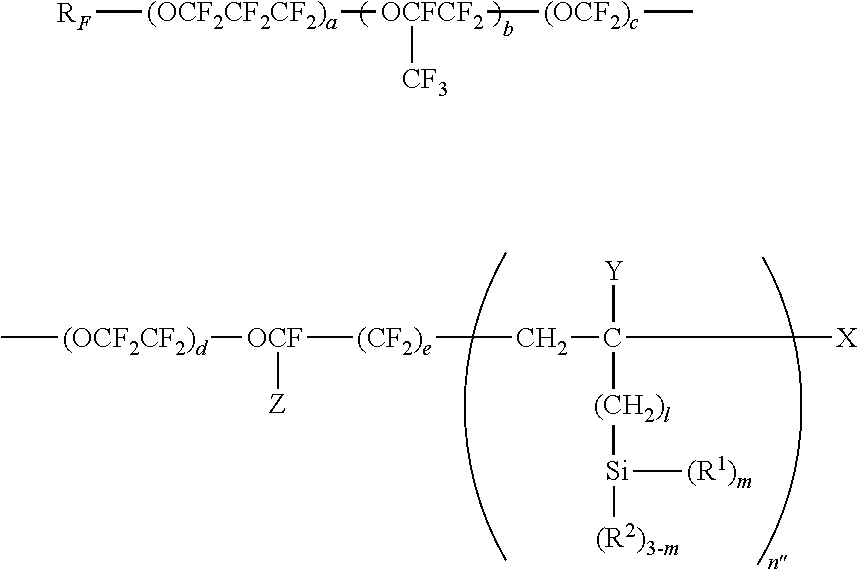Method for the Production of an Optical Article with Improved Anti-Fouling Properties
a production method and technology of optical articles, applied in the direction of instruments, paints with biocides, transportation and packaging, etc., can solve the problems of altering the vision correction effect, affecting the effect of vision correction, and/or the inability to insert the lens into the desired frame, so as to achieve high-quality anti-fouling and reduce surface energy
- Summary
- Abstract
- Description
- Claims
- Application Information
AI Technical Summary
Benefits of technology
Problems solved by technology
Method used
Image
Examples
example 1
[0213]
ProductThicknessAES4 ™5-7nmOF110 ™ (boat)2-4nmMgF220nmMgO2nm
[0214]After surface preparation
[0215]The average Advancing angle was 120°
[0216]The average receding angle was 109°.
[0217]The average hysteresis was 11°
[0218]The table angle was 7°
example 2
[0219]
ProductThicknessAES4 ™5-7nmOF110 ™(boat)2-4nmMgF220nmSiO22nm
[0220]After surface preparation
[0221]The average Advancing angle was 121 °
[0222]The average receding angle was 110°.
[0223]The average hysteresis was 11°
[0224]The table angle was 6°
example 3
[0225]
ProductThicknessAES4 ™5-7nmOF110 ™ (Ebeam)5-7nmMgF220nmMgO2nm
[0226]After surface preparation
[0227]The average Advancing angle was 119°
[0228]The average receding angle was 112°.
[0229]The average hysteresis at a speed between was 7°
[0230]The table angle was 8°
PUM
| Property | Measurement | Unit |
|---|---|---|
| thickness | aaaaa | aaaaa |
| thickness | aaaaa | aaaaa |
| thickness | aaaaa | aaaaa |
Abstract
Description
Claims
Application Information
 Login to View More
Login to View More - R&D
- Intellectual Property
- Life Sciences
- Materials
- Tech Scout
- Unparalleled Data Quality
- Higher Quality Content
- 60% Fewer Hallucinations
Browse by: Latest US Patents, China's latest patents, Technical Efficacy Thesaurus, Application Domain, Technology Topic, Popular Technical Reports.
© 2025 PatSnap. All rights reserved.Legal|Privacy policy|Modern Slavery Act Transparency Statement|Sitemap|About US| Contact US: help@patsnap.com



